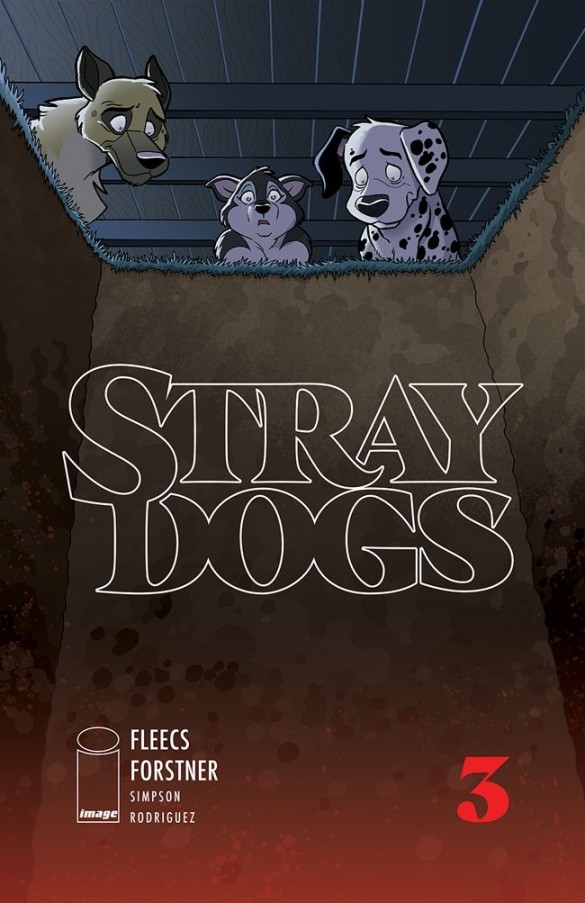Revolutionize Your show Australian Shepherd With These Easy-peasy Tips

The article below relating to Dogs is incredibly informative. Read it yourself and decide what you think of it.
Get All Your Dog Questions Answered Here
A dog is a person's very best friend, as the saying goes. Millions of dog owners know that to be true. The challenge that you must be as good a friend to your dog as he is to you. If you use the tips below, you are going to be able to know you are a great friend to your dog.
Never allow your dog to be alone with small children, no matter how much you trust his temperament. Many little kids have been attacked by family dogs who have otherwise never demonstrated a tendency towards violence. Sleeping dogs may be woken by a toddler and react negatively or some other offense is committed against the animal that sets him off.
Much like people in the United States, many dogs are overweight. Having a few extra pounds on their frame can lead to a number of health problems, like cancer or diabetes. Many owners simply overfeed their pets. Talk to your veterinarian about how many calories your dog needs each day so you can adjust their meals accordingly.
Be careful around Christmas time with a dog in your home; it's the busiest time of year at 24/7 animal clinics! Things like hanging and tree lights pose a danger to your dog, as they could become tangled or gnaw their way down to raw wires. The loveliest of Christmas plants are also hazardous to a dog's health, so take extra care during holidays.
Keep your dog warm during winter with the latest in canine fashion and accessories. You may think it's just for show, but dogs need protection from the elements too! Keeping your dog's paw-pads dry is essential to their health in sub-freezing weather, so invest in suede or leather footwear and pick him up a coat while you're at it. Make them instead if you are creative!
Use hand signals when training your dog along with verbal commands. Signals like these help your dog learn things quickly. Give both methods a try to find out which works best for your particular pup.
Always teach your dog to walk properly on a leash. The dog needs to stay beside you, not behind or in front of you. It also needs to know the command "heel". This will not only make your walks more enjoyable, but it will also help keep your dog safe. The heel command is crucial for your dog, even if a loose leash walk is being used.
Hot summer days are harder for dogs to handle than humans. Always make sure your pet has enough water to drink. Provide them with a shaded area to rest if they are going to be outside for any length of time. And, if your dog begins acting in an unusual manner, call the veterinarian. Heatstroke could be fatal, so it is important to get medical care as soon as possible.
Be clear with your pet during training. The word "no" does not explain anything to your dog, other than that you are unhappy with something. Instead, explain which behavior you do want to see. For example, if your dog jumps on the furniture, tell him to get down instead of just saying the word no.
Don't force your dog to eat something. If you offer him a treat he doesn't seem to like, do not make him eat it. Keep an eye on your dog's likes and dislikes.
Before getting a dog make sure you have thought about your daily routing, as well as special events like vacations. No matter how much you may want a furry friend, you may realize that you aren't ready for that kind of responsibility.
Although the sound may be cute, your dog's nails shouldn't click along the floor when it walks. That's a sign that the nails are too long. The nails should actually just barely touch the ground. Seek the advice of a professional on what tools are the best for giving your dog a pedicure.
You cannot judge a dog's health by the coldness and wetness of its nose alone. There are many reasons for your dog's nose to be cold and wet even if the dog is sick. Assess the health of your dog by observing its mood, energy level and appetite. These are the best ways to know how the dog is. You can also check the temperature rectally.
Always use a leash when your dog or puppy is out in public. This helps you make sure your dog always stays by you and prevents them from wandering off or getting into trouble. original australian shepherd can also help you restrain your dog if something upsets them so that they don't hurt another animal or person.
Not all dogs are meant to be outdoor dogs. If you plan to keep your dog outside, carefully choose the breed. Small dogs, short-hair, or older dogs will not do well being kept outside. Choose one that has a nice thick coat, that is mature and one that is extremely healthy.
Make sure that you buy an appropriate sized collar for your dog in order to ensure its health and safety. If the collar is too lose, it may become snagged on something. If the collar is too tight, it may restrict the dog's breathing ability. Allow for a two finger space between the dog and the collar.
Shop carefully for a dog before you get a new one. Make sure that you have taken the time to research the breed and know how much exercise and grooming a new dog will need. If you take the time to choose carefully, you'll find that you are naturally a better match to the dog and both of you are happier.
If your dog seems to be struggling with learning commands, consider getting a clicker. A clicker is a tool that is useful when training as it teaches your pup that when he does something correctly, a click will happen which is immediately followed by a reward. Clicker training can be helpful for teaching commands, tricks, and walking manners.
All of these hints are now at your fingertips, so it is time to make use of them. Take them each, one by one, and start using them every day. The more you change about your dog's life, the better it will be overall. A happy dog makes for a happy owner, after all!
Best Advice for Dogs with Skin Issues
I still need to publish a real post about Mr. Stix's full backstory, but this feels more pressing. For nearly 18 months, Mr. Stix's permanent nakey spot (from unknown injuries before he was rescued, including 15 fractures and this big patch of coat missing) has featured several inflamed, peeling areas. Initially I tried to fix it myself at home with things like aloe vera, vaseline, a veterinary ointment called animax that the shelter had give us while we fostered him most of 2019, etc. It's sort of a combination of steroids, antibacterial, and antifungal stuff. I took him to see our main veterinarian in spring 2020, when there was a 2-month wait to get into see a board-certified veterinary dermatologist. It has been quite a journey since then, and it's nowhere near over. Here's my best advice for dogs with skin issues.
Before I tell the ongoing saga with Mr. Stix's skin. Here is my best advice for dogs with skin problems.
See a board-certified veterinary dermatologist as soon as you can. Yes, your main veterinarian can probably help, but it's honestly best to go right to the top experts.

Agree to whatever skin scrapings / cytology the veterinary dermatologist recommends. This provides information about what types of secondary infections currently grow on your dog's damaged skin.
Do NOT assume every skin issue is allergies. It often is some sort of allergic process, but NOT always and assuming so (and acting accordingly may only delay real solutions and subject your dog to all kinds of quack advice and home remedies).
Buy the best quality fish oil and Vitamin E supplements you can afford, if it's recommended for your particular case of a dog with skin issues.
When necessary, agree to the skin biopsies (yes, like minor surgery) and have them reviewed by a veterinary pathologist that specializes in dogs with skin issues. The one we used is at Texas A&M.
Follow your veterinary dermatologist's advice and plans, and keep the faith. These dogs with skin problems often don't improve quickly. (I need to take my own advise. See below.)
Mr. Stix's Story as a Dog with Skin Problems
This is what Mr. Stix's nakey spot looks like when it's normal. Photo from May 2019 soon after his hip surgery. The bald patch is permanent. That's not the issue.
This is how bad the red / peeling areas got in mid-2020 when we saw our main veterinarian, who added a low-dose of oral Vitamin E and some topical too and told me to keep using the animax.
This is how it looked when Mr. Stix first saw the board-certified veterinary dermatologist in early August 2020, but the specialist had me STOP the animax and instead use a prescription anti-bacterial ointment (mupirocin) ... as well as add a better quality oral fish oil and continue both topical and oral Vitamin E (but at a higher dose twice a day). We knew from the skin scrapings / cytology they did onsite that Mr. Stix had a bacterial infection.
But, without the daily topical steroids (which long term are a bad idea), Mr. Stix's skin got much, much worse -- even breaking open and scabbing over.
Our veterinary dermatologist had recommended doing the skin biopsies right away in August 2020, and I *almost agreed to it then, but I was VERY worried about the cuts resulting in skin that would NOT heal. And, I figured it was at least worth a try to use the prescription antibiotic ointment and other supplements and stuff.
But, by around Thanksgiving, it was clear we had to do the biopsy. That photo is kind of gruesome, so you can see it here, if you want. I wish I had done the biopsy sooner. I feel like I wasted time from August through November.
Post-Biopsy Diagnosis
As I expected, despite all the know-it-alls trying to tell me it was an allergic issue, it turns out that Mr. Stix instead has an autoimmune condition called erythema multiforme. They believe it was triggered by the trauma of his earlier injuries. They don't think it is life-threatening. They don't think it will spread to other areas of his skin. Just the already damaged, permanent nakey spot.
With that information in hand, we updated the treatment plan to include a topical, non-steroidal anti-inflammatory ointment (tacrolimus -- often pricey, but we used a Good RX coupon at Costco to get the cost down). They use a version of this medication orally for people who have had various kinds of transplants. It's the smallest / safest option for treatment, and that's where we started.
I was so hopeful it would work at the once-daily application, but the skin still didn't heal completely.
So, in early 2021, we started applying it twice daily on the advice of our veterinary dermatologist.
But, it still hasn't healed completely. It often improves a lot and then comes roaring back, so we had another appointment to see the specialist last week. We had to try something new.
Enter the Big Immune-Suppressing Drug
Despite my concerns and form of veterinary PTSD about major immune suppression drugs (after our experiences with Lilly), I agreed last week to add oral cyclosporine, which is also a drug that people get after various transplants. Mr. Stix would need to take it daily for life.
It smells like it's made from skunk butts, so each gel-cap pill is individually packaged, and you keep them in the freezer because that can help with nausea it can cause (since it's recommended you give on an empty stomach).
I found some good info on this med, and our veterinary dermatologist assured me that it has been safely used in veterinary medicine for like 20+ years, etc.
The med only comes in doses of 25 mg, 50 mg, and 100 mg, and at his size Mr. Stix's ideal dose is around 88 mg once a day. So we went with 75 mg (25+50) to err on the lower side.
It takes like 3-7 days for the med to build up in the blood to therapeutic levels, but it takes more like 4-6 weeks to know if it's going to help the skin (or not).
We made it to day 4, then the barfing started.
Anxiety
I wish I could say that this is all going to be fine, but I just don't know. I feel like I just have to accept that the skin will never fully heal, even though seeing his raw spots up close while applying the topical med twice a day and topical Vitamin E once a day causes me so much angst and anxiety.
I supposed to check in with our veterinary dermatology team next week to confirm that Mr. Stix's weirdness and apparent suffering has improved.
It took a lot of convincing to get Mr. Champion of My Heart to agree to try the cyclosporine, so even if the specialist comes back and recommends maybe a lower dose, I doubt we'll want to risk it ... because Mr. Stix sure seemed to be having some neurologist issues to me, and after the Lilly situation, I just cannot do that again.
He is only 3 years old. I don't want to make anything worse. It honestly felt like I'd poisoned him.

The good news is that most of the time his skin doesn't seem to hurt or itch or anything -- though I do have pain meds, if he needs them. It mostly just looks bad, and he has to wear a no-lick collar for about 20 minutes after I apply his meds so that he doesn't lick it off.
His nakey spot is prone to sunburn anyway, and the topical tacrolimus increases the risk of burning, so I used his earlier sun-reflecting coat (which started to look ragged) as a pattern and sewed him a new / light sun protection coat. He looks very cute in it.
https://championofmyheart.com/2021/08/05/dogs-with-skin-issues/
I ran across that content on Pets when doing a lookup on the web. Are you aware of someone else who is occupied with Pets? Be sure share it. Kudos for your time. Return soon.
